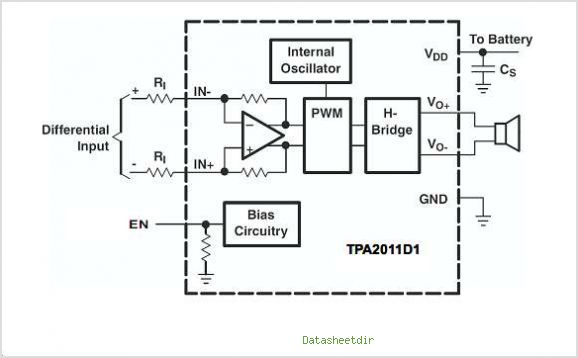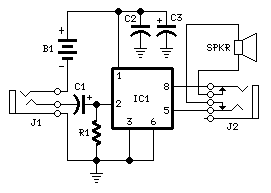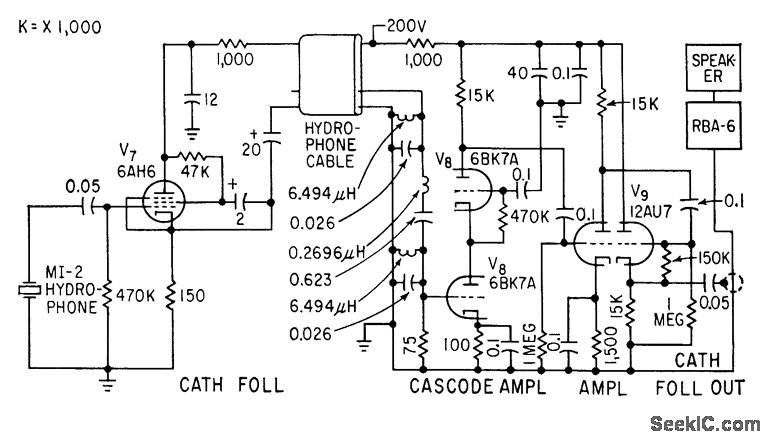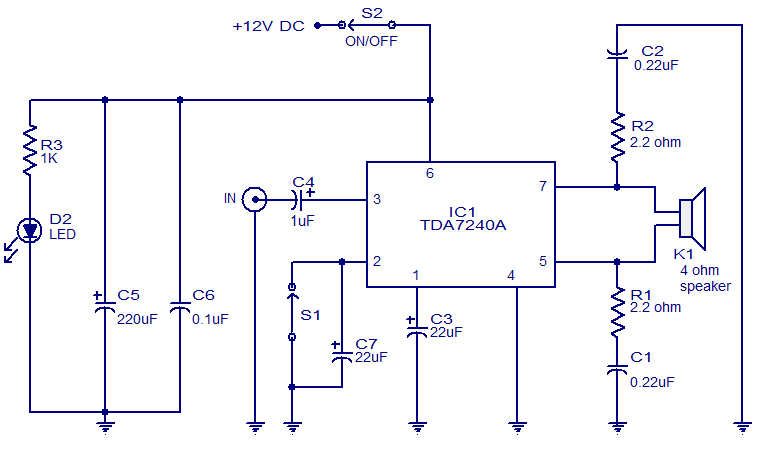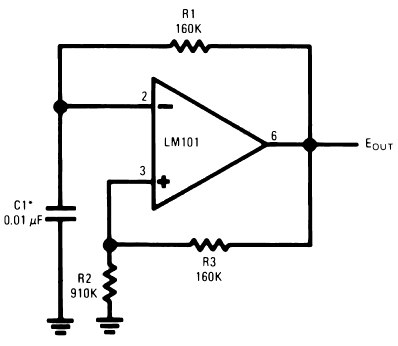
Absolute value amplifier
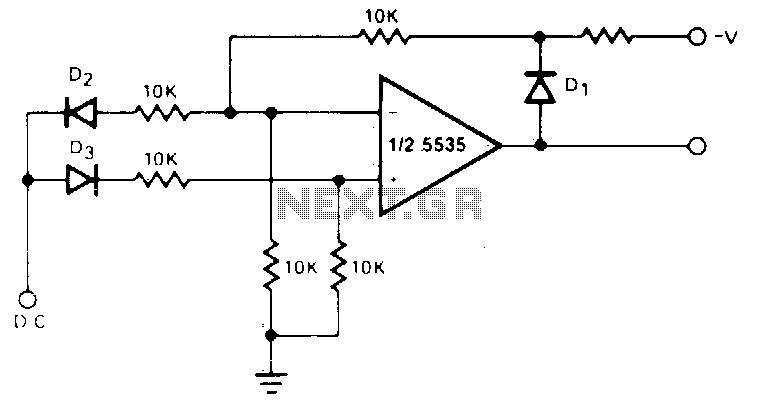
The circuit generates a positive output voltage for either polarity of input. For positive signals, it functions as a non-inverting amplifier, while for negative signals, it operates as an inverting amplifier. The accuracy is poor for input voltages under 1V; however, it can be effective for less stringent applications.
This circuit utilizes operational amplifiers (op-amps) to achieve its functionality. The non-inverting amplifier configuration is employed for positive input signals, where the output voltage is a scaled version of the input voltage, determined by the feedback and input resistors. The gain of this configuration can be set using resistors R1 and R2, following the formula: Gain = 1 + (R2/R1).
For negative input signals, the circuit switches to an inverting amplifier configuration. In this mode, the input signal is applied to the inverting terminal of the op-amp, and the output is inverted and scaled based on the same resistor values. The gain for the inverting configuration is given by the formula: Gain = -(R2/R1), leading to a negative output voltage that corresponds to the negative input.
The circuit's performance, particularly its accuracy for input voltages below 1V, indicates limitations in the op-amp's specifications or the design itself. Factors such as the op-amp's input offset voltage, bias current, and noise characteristics can significantly affect the output for low voltage signals. In applications where precision is not critical, this circuit can still provide a useful amplification function, making it suitable for various signal processing tasks where high fidelity is not required.
Design considerations should include selecting an op-amp with suitable characteristics for the intended application, ensuring power supply levels are adequate to accommodate the expected output range, and carefully choosing resistor values to optimize gain while maintaining stability and minimizing distortion. Additionally, implementing bypass capacitors on the power supply pins can enhance performance by reducing noise and improving transient response.The circuit generates a positive output voltage for either polarity of input. For positive signals, it acts as a noninverting amplifier and for negative signals, as an inverting amplifier The accuracy is poor for input voltages under 1V, but for less stringent applications, it can be effective. 🔗 External reference
This circuit utilizes operational amplifiers (op-amps) to achieve its functionality. The non-inverting amplifier configuration is employed for positive input signals, where the output voltage is a scaled version of the input voltage, determined by the feedback and input resistors. The gain of this configuration can be set using resistors R1 and R2, following the formula: Gain = 1 + (R2/R1).
For negative input signals, the circuit switches to an inverting amplifier configuration. In this mode, the input signal is applied to the inverting terminal of the op-amp, and the output is inverted and scaled based on the same resistor values. The gain for the inverting configuration is given by the formula: Gain = -(R2/R1), leading to a negative output voltage that corresponds to the negative input.
The circuit's performance, particularly its accuracy for input voltages below 1V, indicates limitations in the op-amp's specifications or the design itself. Factors such as the op-amp's input offset voltage, bias current, and noise characteristics can significantly affect the output for low voltage signals. In applications where precision is not critical, this circuit can still provide a useful amplification function, making it suitable for various signal processing tasks where high fidelity is not required.
Design considerations should include selecting an op-amp with suitable characteristics for the intended application, ensuring power supply levels are adequate to accommodate the expected output range, and carefully choosing resistor values to optimize gain while maintaining stability and minimizing distortion. Additionally, implementing bypass capacitors on the power supply pins can enhance performance by reducing noise and improving transient response.The circuit generates a positive output voltage for either polarity of input. For positive signals, it acts as a noninverting amplifier and for negative signals, as an inverting amplifier The accuracy is poor for input voltages under 1V, but for less stringent applications, it can be effective. 🔗 External reference
Warning: include(partials/cookie-banner.php): Failed to open stream: Permission denied in /var/www/html/nextgr/view-circuit.php on line 713
Warning: include(): Failed opening 'partials/cookie-banner.php' for inclusion (include_path='.:/usr/share/php') in /var/www/html/nextgr/view-circuit.php on line 713
